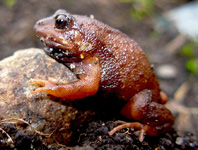Abstract
The hepialid genus Gymelloxes Viette, 1952 is characterized by, and differs from all other genera, by the male genitalia and a combination of characters. G. terea is redescribed due to the brevity of the original description. The male genitalia of Gymelloxes terea (Schaus, 1892) include two features that are unique within the Hepialidae – a posteriorly angled and digitiform tergal lobe, and two shallow, peg-like processes on the posterior margin of the saccus. The male phallus also exhibits minute sclerotized spicules or spots on the apex of an otherwise membranous tube. The external genitalia of the female includes a sclerotized antevaginalis with a broad, dorsally projecting, flat central margin. The species is included within the cibyrine clade of Hepialidae by the structure of the tergosternal connection and narrow spacing between Sc and R on the hindwing. The potential systematic significance of specialized similarities shared with other cibyrine Hepialidae is discussed. A lectotype of Dalaca terea Schaus, 1892 is here designated.
References
Druce, H. (1901) Descriptions of some new species of Lepidoptera from East Africa and tropical America. Annals and Magazine of Natural History, 7, 432–444.
https://doi.org/10.1080/00222930108678495Dumbleton, L.J. (1966) Genitalia, classification and zoogeography of the New Zealand Hepialidae (Lepidoptera). New Zealand Journal of Science, 9 (4), 920–981.
Grehan, J.R. (2010) Structural variants in the morphology of the first abdominal tergite supporting the monophyly of the Latin American genera Cibyra Walker, Druceiella Viette, Pfitzneriana Viette and Trichophassus Le Cerf (Lepidoptera: Hepialidae). Bulletin of the Buffalo Society of Natural Sciences, 39, 43–63.
Grehan, J.R. (2012) Morphological evidence for phylogenetic relationships within the Hepialidae (Lepidoptera: Exoporia). Bulletin of the Buffalo Society of Natural Sciences, 42, 33–62.
Grehan, J.R. & Mielke, C.G.C. (2017) Description of new species of Yleuxas Viette 1951 from Peru and taxonomic notes on the genus (Lepidoptera: Hepialidae). The European Entomologist. [in review]
Mielke, C.G.C. (2014) Notes about Cibyra Walker, 1856 (second note), with description of two new species from southeastern and southern Brazil (Lepidoptera, Hepialidae). Nachrichten des Entomologischen Vereins Apollo, 34, 213–217.
Mielke, C.G.C. & Casagrande, M.M. (2013) A new Cibyra Walker, 1856 from southern Brazil with taxonomic notes (first note) (Lepidoptera, Hepialidae). Nachrichten des Entomologischen Vereins Apollo, 34, 73–86.
Mielke, C.G.C. & Grehan, J.R. (2012) Catalogue of the Latin American Hepialidae with taxonomic remarks (Lepidoptera). Nachrichten des Entomologischen Vereins Apollo, 32, 131–158.
Mielke, C.G.C., Dell’Erba, R. & Duarte, M. (2017) Description of Limyra, gen. n., with a new species and the redescription of Cibyra pluriargenteus (Viette), from São Paulo state, southeastern Brazil (Lepidoptera: Hepialidae). Zootaxa, 4299 (4), 581–591.
https://doi.org/10.11646/zootaxa.4299.4.8Nielsen, E.S. & Kristensen, N.P. (1989) Primitive ghost moths. Morphology and taxonomy of the Australian genus Fraus Walker (Lepidoptera: Hepialidae s. lat.). Monographs on Australian Lepidoptera, 1, 1–206.
Nielsen, E.S., Robinson, G.S. & Wagner, D.L. (2000) Ghost-moths of the world: a global inventory and bibliography of the Exoporia (Mnesarchaeoidea and Hepialoidea) (Lepidoptera). Journal of Natural History, 34, 823–878.
https://doi.org/10.1080/002229300299282Pfitzner, R. (1914) Neue Hepialiden. Entomologische Rundschau, 31, 105–106, 110.
Schaus, W.N. (1892) Descriptions of new species of Lepidoptera Heterocera from Brazil, Mexico, and Peru. Part II. Proceedings of the Zoological Society of London, 1892, 318–340.
Viette, P.E.L. (1952) Contribución al estudio de los Hepialidae. Boletín de la Sociedad Venezolana de Ciencias Naturales, 14, 27–30.
Walker, F. (1856) List of the specimens of lepidopterous insects in the collection of the British Museum. Part VII. Lepidoptera Heterocera. Trustees of BMNH, London, 4 + 300 pp. [(4) pp. + pp. [1509]–1808]

